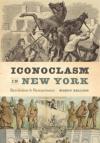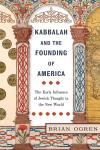Webinar

|
Good Wishes for the Children Rediscovered: Hans Christian Andersen and the Launch of Sarah Gooll Putnam’s Artistic Career | In the course of her work at AAS, Laura Wasowicz, the Society's curator of children's literature, recovered the identities of the translator and illustrator of Good Wishes for the Children, a compilation of Hans Christian Andersen stories published in a limited, high-end edition by the Riverside Press in 1873 as a fundraiser for Boston Children’s Hospital. The illustrator was Sarah Gooll Putnam (1851–1912), an upper-class Bostonian who eventually enjoyed a successful career as a portraitist. This ambitious project was spearheaded by Putnam’s friend Adeline A. |

|
Iconoclasm in New York: Revolution to Reenactment | Join us for a presentation by Wendy Bellion, Professor and Sewell C. Biggs Chair of American Art History and Director of the Center for Material Culture Studies at the University of Delaware. Bellion will discuss the research she undertook using AAS collections for her recent book Iconoclasm in New York: Revolution to Reenactment (fall 2019, out in paperback May 2020), which explores a history of material violence in Revolutionary New York. Bellion’s work traces acts of political iconoclasm and the return of destroyed things in visual representations and civic performances. |

|
Manuscript Cultures in 17th Century New England | Join Ashley Cataldo, AAS curator of manuscripts, and Meredith Neuman, associate professor at Clark University, for a lively presentation on early New England manuscript culture. Presenters will showcase a variety of genres, including diaries, correspondence, account books, deeds, sermon notes, notebooks, annotations, and more. They will explore other intriguing features of manuscripts from the period, including shorthand and curious preservation issues. |
| Iconoclasm in New York: Revolution to Reenactment | ||

|
The Colonial 'Cabbala of the Jews' at the American Antiquarian Society | This talk will center around a unique, beautifully scribed manuscript housed at the AAS, which was given the title 'The Cabbala of the Jews' by its cataloger in 1935. Until recently, this manuscript had never been studied and had an anonymous author, though recent investigation shows that it was written by the famous Scottish Quaker thinker who had made his way to East Jersey, George Keith. The manuscript made its way to Cotton Mather and played a key role in his polemics against Quakerism. |
| Visualizing Equality | The fight for racial equality in the nineteenth century played out not only in marches and political conventions but also in the print and visual culture created and circulated throughout the United States by African Americans. Advances in image technologies—daguerreotypes, lithographs, cartes-de-visite, and steam printing presses—enabled people to see and participate in social reform movements in new ways. African American activists seized these opportunities and produced images that advanced campaigns for Black rights. Dr. |